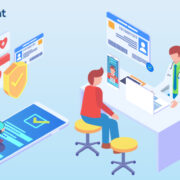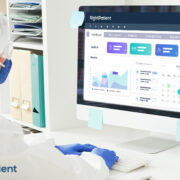4 Strategies for Patient Safety Quality Improvement

Patient safety has always been a much-discussed topic for healthcare experts, hospitals, and well-informed individuals. After all, by not ensuring patient safety, healthcare outcomes will be detrimental due to medical errors, mix-ups, hospital-acquired infections (HAIs), lack of proper communication, and more. These events lead to hospitals being hit with lawsuits and losing goodwill. In fact, one of the issues that cause patient safety incidents is medical errors, and a study indicates that they are the third leading cause of U.S. deaths. Moreover, with COVID-19, ensuring patient safety is a much bigger challenge and responsibility than ever before. The focus of this article is patient safety quality improvement and it’s quite clear that it is a must for U.S. hospitals and health systems.
That being said, let’s take a look at 4 strategies that improve patient safety quality, how medical errors are related to patient misidentification and mix-ups, and how ensuring positive patient identification can help.

RightPatient improves patient safety.
4 strategies for patient safety quality improvement
Providing proper training to healthcare staff members
One of the first tasks for patient safety quality improvement is to evaluate and identify which employees within your healthcare facility require training – they’re the ones dealing with the patients directly, after all. Whether it be nurses, registrars, patient safety professionals, or other staff, improving their skills can significantly improve patient safety.
Use quizzes, short interviews, and their recent performance to identify the ones that require training regarding the do’s and don’ts and patient safety incidents. Ensure that they know the critical aspects that can make or break patient safety within your facility.
Identify and work on reducing patient safety incidents
Patient safety incidents are ever-present in hospitals – they’re just waiting to happen unless addressed appropriately. Take a more proactive approach than a reactive one in identifying issues that might cause patient safety incidents down the line by conducting audits. While this might seem repetitive, it does ensure patient safety quality improvement and can help you avoid hefty costs in the process.
One belief many healthcare providers have is that conducting routine checks is enough. However, healthcare is a dynamic environment and there are new challenges every day that need to be addressed appropriately and in due time. Conducting checks regularly or whenever a serious incident occurs in your facility and monitoring to prevent these incidents using apps can also boost patient safety significantly.
Work on reducing hospital-acquired infections
During COVID-19, this is a strategy all healthcare providers must implement for patient safety quality improvement. Enforcing social distancing practices for everyone in the facilities is the only way to reduce transmission of infectious diseases. Ensure that people (both patients and healthcare staff members) are standing six feet apart, and use proper PPE. Moreover, provide sanitizers or handwashing facilities at crucial points to ensure better protection. Also, minimize or eliminate physical contact as much as possible, especially in registration areas for all incoming patients. Using a touchless patient identity verification platform can significantly help with improving hygiene, and in turn, patient safety.
Preventing medical errors
As previously mentioned, one of the biggest issues that cause patient safety incidents is medical errors, and most of these can be associated with patient misidentification, patient mix-ups, and duplicate medical records.
Imagine this – if a patient is misidentified right from the start, or is associated with an incomplete medical record, their entire treatment will be full of errors. Not only does this lead to wrong medications, but also leads to wrong transplants, longer hospital stays, readmissions, irreversible physical damage, and even deaths. Preventing medical errors, thus, becomes the topmost priority to enhance patient safety within hospitals – and that’s exactly what RightPatient does.
Achieve patient safety quality improvement with RightPatient
RightPatient is a touchless biometric patient identification platform that is used by leading healthcare providers to identify their patients accurately at every interaction. By using patients’ photos, RightPatient identifies them accurately right from the start and across the care continuum, preventing duplicate medical records, patient safety incidents, and medical errors.
Are you a responsible healthcare provider that is working to enhance patient safety? Contact us now to learn how you can improve patient safety, and more, with RightPatient.































